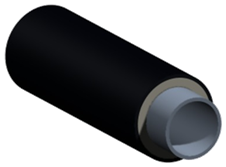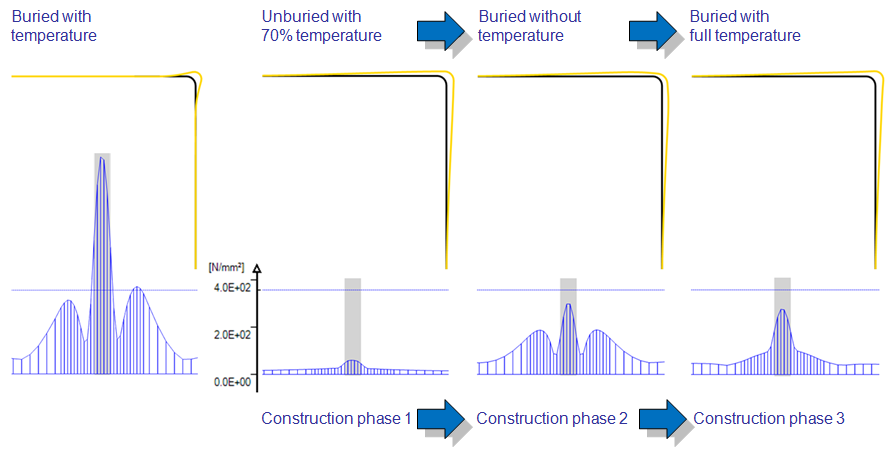
 Ple4Win
Ple4Win

Town Heating Pipelines & Other Hot Pipelines
Town heating is mostly done with hot water being cooling water from industrial plants. In some cases (e.g. New York) older town heating systems are base on steam.
A common operational temperature of water conveying town heating pipelines lies between 70 and 120 degree C. Construction of these pipelines consists often of an inner steel tube, surrounded by a layer of PUR foam and enclosed by a PE tube. However steel-in-steel pipelines are applied as well. Problem with such pipelines in town streets is the narrow space available and as a result short radius bends have to be applied. In the analysis example shown a 90 degree, R = 1.5 D bend has been applied with two long legs, such that at the ends the pipeline do not move anymore (fixed by the soil friction). Due to the increase from construction temperature to the operational temperature the pipeline tends to feed towards the bend end the bend is more or less squeezed into the soil by the lateral soil reactions that grow near the bend as a result of the expansion. High stresses may result in the bend. A construction method may be applied to reduce these displacements and resulting stresses by preheating the pipeline.

Ple4Win results
- Direct burying of the pipeline and then applying the temperature load; stress loading of the pipeline is shown (first figure). Highest peak at mid bend and auxiliary peaks where the bend displacement is counteracted by the lateral soil stiffness. (bend is ‘squeezed’) The allowable stress is shown as well and the bend shows to be highly overstressed.
- The pipeline is preheated:
- construction phase 1: The pipeline is constructed in the open trench and then preheated up to 70% of the operational temperature. Only the soil friction from the pipe deadweight counteracts displacements. Stressing at the bend (gray area) is quite low (second figure)
- construction phase 2: The trench is filled and afterwards the pipeline is cooled down to environment temperature. The maximum stress level becomes about 85% of the allowable stress. (third figure) However the axial force is a tensile force and the bend is bent inward.
- construction phase 3: The pipeline is brought to 100% of the operational temperature. The maximum stress stays at about 85% of the allowable stress only the axial force has become a compressive force and the bend is bent outward. (fourth figure)
The preheating is not 50% but 70%, because during cool down the contraction of the pipeline is less than the expansion during preheating as a result of the soil friction hysteresis.

Ple4Win is very well suited to ‘play around’ with a pipeline, its soil surroundings and loading sequences to find an optimal design or to find new ways to construct a pipeline.